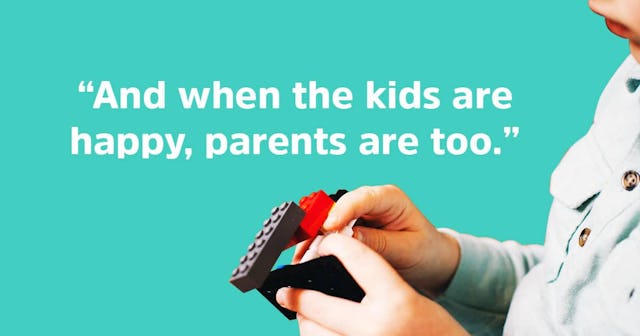Distance-Learning Reiterates The Need For More Free Play For Students

The day I learned that my children’s schools would close and we’d be distance learning from home, I created a schedule for our day. With four children and two adults working from home, I couldn’t allow a total free-for-all. Without any structure, I knew we would all crumble.
What I quickly realized is that my kids needed way more free time for play and far fewer blocks of time for school work, music practice, and chores. Our first week of isolation was rough. It rained every single day—even snowing one day—and we were stuck mostly indoors. We were completely miserable, and my schedule was barely helping us keep our heads above water. But then on day seven, the sun came out—and stayed out. None of us wanted to be inside. I realized the more time we had for free play, the better (and more) my kids were learning.
What’s the deal? Aren’t we supposed to push our kids to be smarter by helping them do more worksheets and glue their eyes to screens so they can e-learn? Not really. Our kids basic needs must be met in order for them to learn. If kids are hungry, tired, or restless (from not enough activity), they won’t thrive academically. If we really want our kids to learn and learn well, we need to give them free time. A lot of free time. According the the American Academy of Pediatrics, “Play is not frivolous: it enhances brain structure and function and promotes executive function (ie, the process of learning, rather than the content), which allow us to pursue goals and ignore distractions.”
Not everyone has the luxury of an outdoor space, but you don’t have to have private yard space for your kids to get their play on — free play is valuable whether indoors or out. If you’re able to get your kids outside, though, there are endless perks. My kids have spent at least three hours a day in the sunshine. They’re eating popsicles, digging holes, drawing with sidewalk chalk, riding bikes, and shooting hoops. They’ve climbed trees, rolled in the grass, and played in my preschooler’s water table. They expend all their energy, and come in dirty and hungry. After showers and eating a huge meal, they happily grab a book and read for a half hour while I make dinner. The sunshine and endless exercise works its magic. Normally bedtime is an epic battle, but now they’re exhausted.
Wherever they engage in free play, they’re working on their social skills. Like many parents, I was worried about my kids’ well-being without face-to-face interaction with their peers and teachers in the school setting. But it turns out, my kids have each other and can practice social skills at home just like they do on the playground or cafeteria. There’s a lot of negotiation over who gets what and when. They’ve had arguments, but they’ve figured it out every time. Their interactions require patience, empathy, give-and-take, and apologies. Seriously, it’s like they’re running and participating in their own self-improvement conference. It’s amusing (and pleasing) to observe.
Misha No/Reshot
They’ve also experienced a lot of boredom. Now, I know many parents dread their kids whining that they’re “so bored,” but it turns out, being bored is a tremendous gift. Out of boredom comes self-reflection, creativity, and relaxation. One day my children found different yard elements—dandelions, bark, grass, rocks—and made a “stew” while playing house. Meanwhile, I sat by them reading a book and sipping iced coffee. Win-win? You bet.
My daughter woke up early one morning and wrote a book that was downright hysterical. She said one of her goals during social isolation was to “get big muscles.” My son made himself a cell phone out of construction paper. One day I found three of my kids building some sort of fort out of boxes and cans, attempting to keep it together with glue. They’ve played dress up for hours, digging through old Halloween costumes, and creating new outfits that they insist I take pictures of.
Yes, it sounds like we live in some sort of hippie village—but in reality, we’re in suburbia. We’re trying to make the most out of the time we have together, despite the fact that at times it feels like the entire world is caving in. I just can’t bring myself to force my kids to stay inside while I battle all four of them to sit still, be quiet, and learn. We do what we can, within reason, and then continue learning in another way—through free play.
By the way, schools have been catching on. More and more research and experts have claimed that recess is important. Some districts have begun to ditch or drastically reduce homework. What we’re realizing as a society is that perhaps we’ve had it wrong for some time. There are numerous benefits to letting kids play without step-by-step instructions from an adult. One of them is the very goal of school: learning. According to Pediatrics, “When play is allowed to be child driven, children practice decision-making skills, move at their own pace, discover their own areas of interest, and ultimately engage fully in the passions they wish to pursue.”
Social isolation has allowed parents the opportunity to remember that learning happens in a myriad of places–both inside and outside–and ways. There is value in letting our kids have unstructured, free play time. If anything, our kids are happier when they get to create their own fun. And when the kids are happy, parents are too.
This article was originally published on